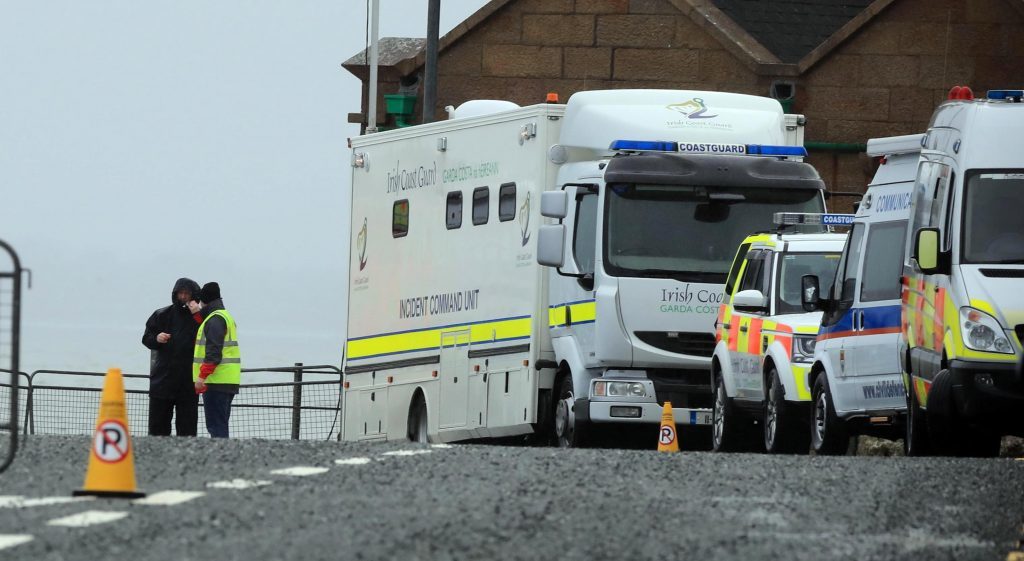
Search teams looking for three crewmen from a Coast Guard helicopter that crashed into the Atlantic have successfully mapped out a section of water where they believe the aircraft’s black box recorder lies.
But despite a 10-hour operation preparing the 100m by 100m area off Blacksod, Co Mayo, for a dive and underwater robot operation, large swells expected on Monday could hamper progress again.
Declan Geoghegan, of the Irish Coast Guard, said the section of ocean, beside Blackrock Lightouse, was now fully scanned and mapped to allow the Irish Lights vessel – the Granuaile – to manoeuvre safely into position.
The ship has a heavy-lifting crane as well as “dynamic positioning“ technology, which allows it to remain in exactly the same spot on the surface – much like an aircraft would hover – so divers and remote operated vehicles can be deployed to search 40m below.
It is hoped the black box recorder is still attached to the bulk of the helicopter wreckage, or near it, and that the three missing crewmen will be in the Sikorsky S92 which disappeared without warning early last Tuesday morning.
“They have the area scanned and mapped and they have a plan now to get the Granuaile into position,” said Mr Geoghegan.
“But the weather is deteriorating, deteriorating in terms of swell. So they just might not be able to do a whole lot on Monday.
“From Tuesday onwards, its looks a lot better into the rest of the week.
“Monday might not be a great day but they have all the preparatory work done – they have achieved all that and more.”
The strongest signal from the black box recorder was detected in the 100m by 100m section just off Blackrock lighthouse, around 13km offshore from Blacksod, where the aircraft was due to land to refuel moments before it vanished.
The underwater terrain, part of the lighthouse rock, and dangerous underwater currents in the area are adding to difficulties.
While search teams are confident they are looking in the right area for the black box, they will not know if it remains attached to the missing helicopter fuselage, or if the fuselage remains intact, until divers or underwater vehicles are deployed.
In the vast majority of helicopter crashes, crew are found within the wreckage but heavy underwater currents can break apart the bulk.
The funeral took place on Saturday for Captain Dara Fitzpatrick, 45, who was the only one of the four crew recovered from the ocean.
The mother-of-one was remembered as a brave hero, an adoring mother and a champion of the underdog during a packed service at St Patrick’s Church, Glencullen, in the Dublin mountains.
Fr Andrew O’Sullivan said that few funerals were “as profoundly sad and sorrowful”.
The parish priest added that everyone was praying the “nightmare of waiting may soon be over” for the families of the other crew members – Captain Mark Duffy, Winchman Ciaran Smith and Winch Operator Paul Ormsby – who remain missing.
President Michael D Higgins, Taoiseach Enda Kenny and Fianna Fail leader Micheal Martin were among the mourners.
The Dublin-based helicopter crew was providing cover for another Coast Guard helicopter involved in an early-morning evacuation of a crewman around 240km off the west coast.
It had flown directly to the scene from the Irish capital, travelled around 16km out to sea, then turned back towards land to refuel.
There was no indication of any danger moments before it vanished, with the crew’s final transmission: “Shortly landing at Blacksod.”